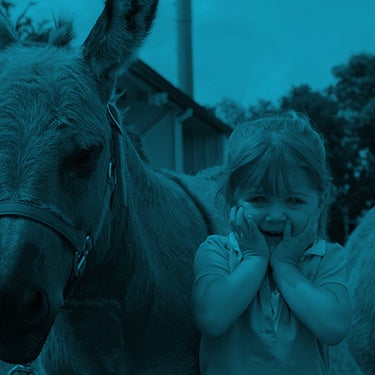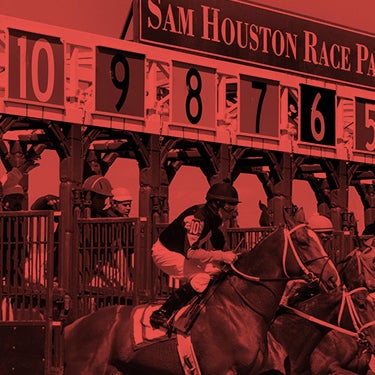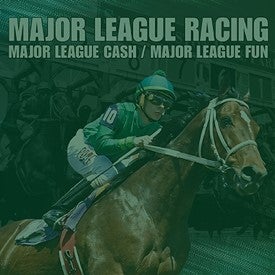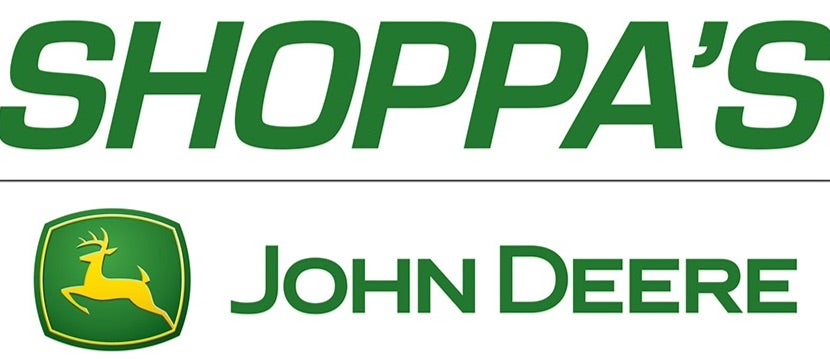
FRIDAY NIGHT FEATURE – STARTER PAUL STUTES
By Martha Claussen
Anyone who has ever watched a horse race has seen the familiar routine of horses preparing for competition. The field enters the racetrack and parades in front of the grandstand. After their warmup, the horses approach the starting gate, are loaded in, the bell sounds and off they go.
It looks so effortless that most spectators take it for granted, but it’s important to recognize the pivotal role played by the starting gate crew in our industry.
Paul Stutes is the starter at Sam Houston and is supported by a 13-man crew. Most have grown up around horses. They are strong, hard-working and instinctive in their ability to anticipate the unexpected and respond quickly to protect both the horse and rider.
A very important aspect of their work takes place five mornings a week when horsemen are able to school their horses in the starting gate, assisted by Stutes and his crew. Some will be seeing the gate for the first time. This may involve the horse simply walking in, standing and backing out. Others stand, then work three furlongs with the bell. Some are schooled individually, others in company. With the first time starters, the gate crew and riders never know what to expect.
Without exception, trainers at Sam Houston Race Park have tremendous respect for the gate crew. Horseman J. R. Caldwell returned for the first time in seven years, encouraged by the passage of House Bill 2463, which has given Texas racing a significant boost in purses.
Born in Idaho, Caldwell resides in Valley View, just north of Denton. His top Thoroughbreds include two-time Texas Thoroughbred Association (TTA) Horse of the Year, Texas Chrome
“The money brought us back,” he said. “I’m just a small stable, so the purse increase has been a huge incentive. My Texas owners called me up and said they wanted to run here.’
Prior to his training career, Caldwell worked the gates for all three tracks and acknowledged the role of the starter and gate crew.
“It’s a critical part of racing,” stated Caldwell. “I’ve lost a lot of races when my horse does not get out of the gate well and won a lot of races when they get out and are in a good position. Paul works well with us and does a very good job.”
The 59 year-old Stutes is committed to maintaining good relationships with horsemen.
"Most trainers work with me, because they know I want to help them," said Stutes. "They know how each horse acts around the barn and share information that can be very helpful.”
Once the program is drawn for live racing, Stutes assigns each one of his assistants a horse. From morning works, each man knows if a horse is nervous, needs more time to load or requires special handling.
When Stutes is satisfied that all horses are in place and ready to start the race, he presses a button that rings the bell while simultaneously opening each of the doors on the starting gate.
The minute the horses break from the gate, one of the crew jumps into the truck to move the gate to a rail position so as not to impede the horses coming around the turn.
At the end of each race, the television cameras focus on the winning connections. The jockey, trainer and owner pose for their picture and the betting public checks the toteboard to see the value of the winning payouts.
The gate crew is already at work, setting the starting gate, and readying for the next group of horses to load and release without incident.
The 2020 Sam Houston Thoroughbred season heads into its final month and it’s been a very solid meet so far. The added purse money has resulted in fuller fields, which has been exciting for fans and a boost to the track’s handle. As for Stutes, he and his crew are happy to load ten and 12 horse fields.
“We have 200 more horses running this year,” Stutes added. “Full fields for maiden races can be challenging, but we are not complaining. It’s been a tremendous start for Texas racing!”
###
Martha Claussen has been prominent in the Texas racing industry since 1997 as a publicist, writer and handicapper.
Anyone who has ever watched a horse race has seen the familiar routine of horses preparing for competition. The field enters the racetrack and parades in front of the grandstand. After their warmup, the horses approach the starting gate, are loaded in, the bell sounds and off they go.
It looks so effortless that most spectators take it for granted, but it’s important to recognize the pivotal role played by the starting gate crew in our industry.
Paul Stutes is the starter at Sam Houston and is supported by a 13-man crew. Most have grown up around horses. They are strong, hard-working and instinctive in their ability to anticipate the unexpected and respond quickly to protect both the horse and rider.
A very important aspect of their work takes place five mornings a week when horsemen are able to school their horses in the starting gate, assisted by Stutes and his crew. Some will be seeing the gate for the first time. This may involve the horse simply walking in, standing and backing out. Others stand, then work three furlongs with the bell. Some are schooled individually, others in company. With the first time starters, the gate crew and riders never know what to expect.
Without exception, trainers at Sam Houston Race Park have tremendous respect for the gate crew. Horseman J. R. Caldwell returned for the first time in seven years, encouraged by the passage of House Bill 2463, which has given Texas racing a significant boost in purses.
Born in Idaho, Caldwell resides in Valley View, just north of Denton. His top Thoroughbreds include two-time Texas Thoroughbred Association (TTA) Horse of the Year, Texas Chrome
“The money brought us back,” he said. “I’m just a small stable, so the purse increase has been a huge incentive. My Texas owners called me up and said they wanted to run here.’
Prior to his training career, Caldwell worked the gates for all three tracks and acknowledged the role of the starter and gate crew.
“It’s a critical part of racing,” stated Caldwell. “I’ve lost a lot of races when my horse does not get out of the gate well and won a lot of races when they get out and are in a good position. Paul works well with us and does a very good job.”
The 59 year-old Stutes is committed to maintaining good relationships with horsemen.
"Most trainers work with me, because they know I want to help them," said Stutes. "They know how each horse acts around the barn and share information that can be very helpful.”
Once the program is drawn for live racing, Stutes assigns each one of his assistants a horse. From morning works, each man knows if a horse is nervous, needs more time to load or requires special handling.
When Stutes is satisfied that all horses are in place and ready to start the race, he presses a button that rings the bell while simultaneously opening each of the doors on the starting gate.
The minute the horses break from the gate, one of the crew jumps into the truck to move the gate to a rail position so as not to impede the horses coming around the turn.
At the end of each race, the television cameras focus on the winning connections. The jockey, trainer and owner pose for their picture and the betting public checks the toteboard to see the value of the winning payouts.
The gate crew is already at work, setting the starting gate, and readying for the next group of horses to load and release without incident.
The 2020 Sam Houston Thoroughbred season heads into its final month and it’s been a very solid meet so far. The added purse money has resulted in fuller fields, which has been exciting for fans and a boost to the track’s handle. As for Stutes, he and his crew are happy to load ten and 12 horse fields.
“We have 200 more horses running this year,” Stutes added. “Full fields for maiden races can be challenging, but we are not complaining. It’s been a tremendous start for Texas racing!”
###
Martha Claussen has been prominent in the Texas racing industry since 1997 as a publicist, writer and handicapper.















